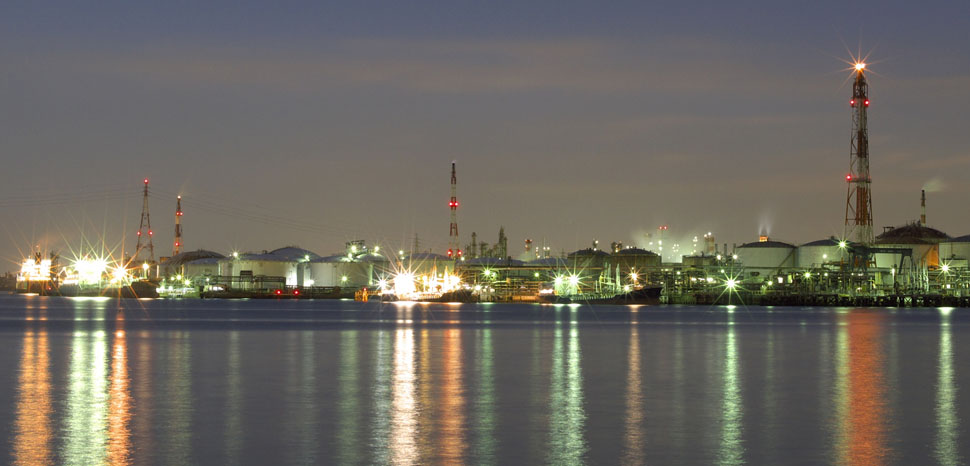Climate change, which has been mostly driven by human activity since the Industrial Revolution, poses a real threat to the chemical industry and the health and safety of employees. The weather is becoming increasingly warmer, and the fact that the global sea level has risen by roughly 8 inches since 1880 is undeniable proof of this alarming problem. By 2100, it is expected to rise by 1 to 8 feet.
The chemical industry is one of the most vulnerable industries when it comes to climate change, as a lot of chemical plants are located in low‐lying coastal areas, which makes the facilities susceptible to damage from hurricanes, floods, and erosion. These phenomena are increasing with climate change. Extremely hot weather can easily trigger industrial disasters affecting workers and nearby communities, such as explosions, major chemical releases, fires, and chemical leakage into the air, water, and soil.
At the moment, there are 872 chemical facilities within 50 miles of the U.S. Gulf Coast, a place where hurricanes are very common. Over 4.3 million people whose health and safety could be severely impacted live near these chemical plants. Furthermore, 1,717 schools and 98 medical facilities are situated within 1.5 miles of these chemical facilities. Disturbingly, health risks from chemical facilities are understudied, but they are believed to be large and constantly growing. Industrial disasters in chemical facilities can be triggered by natural hazards such as hurricanes, floods, lightning, and earthquakes. According to estimates, between 2% and 5% of chemical releases in the country were the result of natural phenomena and up to 800 such industrial disasters occur annually in the United States. Moreover, approximately 450 accidents involving on‐shore hazardous liquid pipeline systems are caused by natural hazards every year.
Are chemical facilities prepared to handle climate change-related accidents?
The Risk Management Plan rule of the 1990 Clean Air Act requires facilities using hazardous substances to build a plan that identifies the potential impact of a chemical accident, develops prevention steps, and thinks out emergency responses. While these chemical plants are instructed to assess the possible causes of emergencies, a Government Accountability Office report found that risks stemming from climate change were not being considered, leaving facilities with scarce information on how to respond to and deal with threats such as hurricanes and sea-level rise.
To make matters worse, the Trump administration sided with chemical industry lobbyists and canceled safety rules governing thousands of facilities using hazardous substances across the United States. Since 2017, multiple chemical plant explosions have occurred in Houston, Texas. Now, government investigators are urging lawmakers to take action, as a lack of federal regulation increases the risk of chemical disasters during extreme weather events caused by climate change at chemical plants nationwide.
While President Joe Biden is considering issuing a new rule in this respect next summer, some chemical companies and industry groups are against the enforcement of new regulations. They argue that they are well-prepared for disasters and that new rules would only make the chemical industry more vulnerable to such accidents. Approximately one-third of commercial and industrial facilities that manufacture, use, handle or store toxic chemicals are situated in areas prone to natural hazards such as floods, storm surges, and wildfires. These phenomena are likely to be worsened by climate change, so new regulations to prevent disastrous accidents are more than necessary.
The Environmental Protection Agency (EPA) should address climate change risks in its regulation of chemical facilities
Over 3,200 of the 10,420 facilities that should have a Risk Management Plan, including chemical plants and water treatment plants, are at great risk of polluting the environment with harmful chemicals due to natural hazards that will become more and more frequent, as well as more and more intense, as a consequence of climate change. Additionally, more than 150 facilities, particularly on the U.S. Gulf Coast, are located in areas that might become subject to at least one foot of sea-level rise. After a 2013 explosion at a Texas fertilizer plant partially caused by a lack of federal regulations on how some hazardous chemicals must be stored, the Obama administration urged the Environmental Protection Agency to review the risk management planning regulations and change these rules if necessary.
Unfortunately, the safety regulations for chemical plants set by the Obama administration have been canceled by the Trump administration. As one of the most influential lobbying forces in the country, the chemical industry has been fighting government attempts to protect the general population against hazardous substance leaks due to climate-related disasters for a long time. Following the 2013 incident, the agency’s review contained a major update to the rules of the Risk Management Plan during the last days of the Obama administration. These new regulations required most chemical plants to evaluate their potential chemical release impacts and take steps to prevent such accidents. However, the Environmental Protection Agency faced extreme opposition from the chemical industry, as lobbyists and trade associations filed over 44,000 comments.
When the Trump administration and a Republican Congress took power in the winter of 2017, the chemical industry had powerful allies to assist it in stopping the new rules from becoming effective. Nonetheless, now that the Trump administration is over, the Environmental Protection Agency should make another attempt at setting new, stricter regulations for chemical facilities on how they handle toxic substances to prevent disasters such as chemical leakages that could affect entire communities. The agency must ensure that these facilities mitigate the risks associated with climate change and better protect nearby communities from chemical disasters during extreme weather phenomena. Currently, federal chemical disaster rules are very lax and need to be strengthened to keep both workers and the public safe.
In January 2022, more than 70 state and local elected officials sent a letter to the agency’s Administrator Michael Regan, demanding a stronger Risk Management Plan and chemical disaster prevention rules that consider climate change risks. The Environmental Protection Agency now has a critical opportunity to incorporate the Government Accountability Office’s recommendations into its current review of the Risk Management Plan rule. “The RMP needs urgent rule changes that will prevent chemical disasters from happening in the first place, offset growing risk posed by climate change and mitigate the cumulative health impacts from hazardous chemicals that workers and fenceline communities experience daily,” said the members of the Coalition to Prevent Chemical Disasters.
Climate change is a threat to the chemical industry, and radical preventative measures are needed
The chemical industry is already responsible for a tremendous level of greenhouse gas emissions. With the worsening of climate change, we should expect to witness a significant increase in chemical pollution among the communities that live nearby chemical facilities, as well as more and more chemical disasters. Both chemical workers and the people whose home is in close proximity to chemical plants are at high risk of experiencing toxic exposure, so employers and the Environmental Protection Agency must take radical measures to mitigate it.
While the rules with regard to chemical facilities having a thorough plan to use in the event of a sudden, extreme weather phenomenon are very lax, almost inexistent, the Environmental Protection Agency should tackle this issue and make it a priority, as climate change is inevitable. If chemical facilities continue their activity without having a well-defined strategy in place to follow when a disastrous weather phenomenon strikes, the health and safety of workers are at stake, and the nearby communities will also be severely impacted.
Jonathan Sharp is the CFO of law firm Environmental Litigation Group, P.C., headquartered in Birmingham, Alabama.
The views expressed in this article belong to the authors alone and do not necessarily reflect those of Geopoliticalmonitor.com




